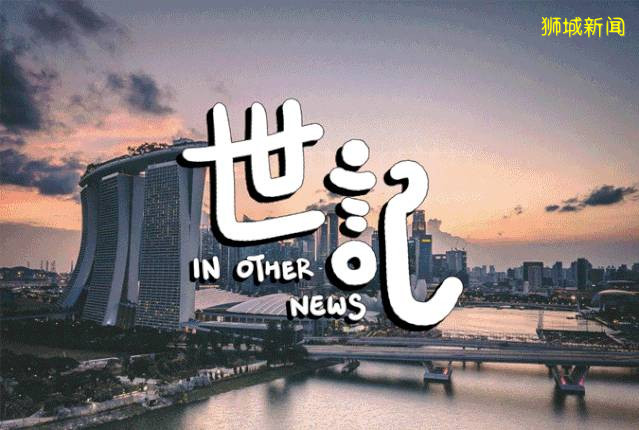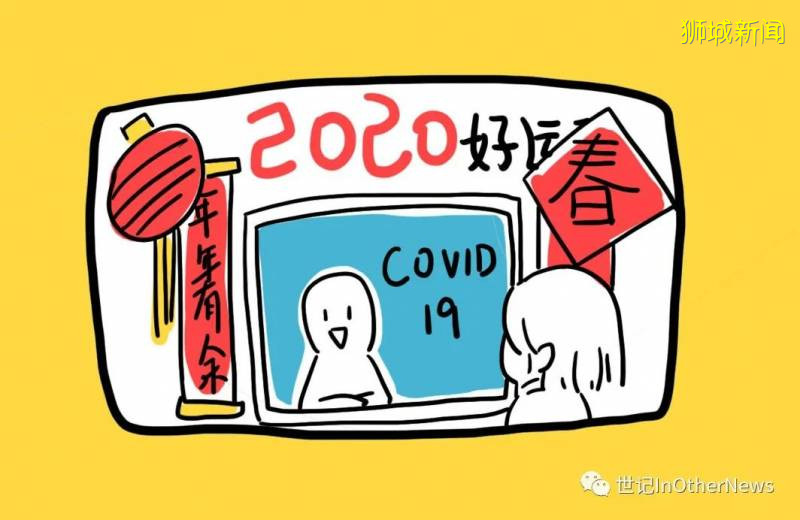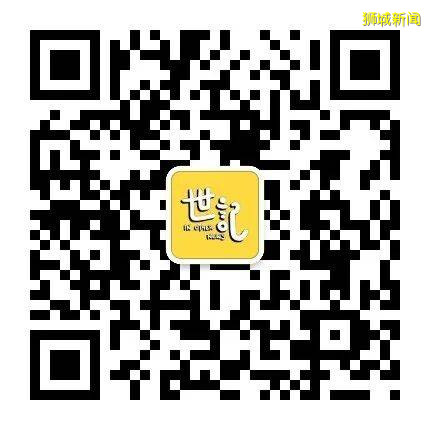回”家“ 疫情之下的回坡日記 Going “Home”: An Expatriate’s COVID-19 Travel Diary
國內疫情剛剛發展起來的時候我剛從新加坡回到沈陽過年。當時新加坡疫情還不太嚴重,雖然二月份開始收緊對短期遊客簽證的發放,不過政策整體上還是比較佛系。再加上我拿的是較長期的工作簽證,所以並沒有很擔心回坡入境的問題。沒想到後來回新加坡的計劃經曆了一波三折,折騰了好幾個星期才順利回坡。
I was on vacation in my hometown in Shenyang, China when COVID-19 began spreading through China around the Lunar New Year.
At the time there were only a handful of confirmed cases in Singapore, where I’ve lived and worked for the past four years. Back then, the Singaporean government had adopted a rather hands-off approach towards the virus, which had yet to be declared a pandemic. I was not worried about my trip back to Singapore, as I hold a work visa in a famously business-friendly country.
在計劃回新加坡的前兩天晚上,新加坡突然出台了政策,要求所有入境十四天前在中國境內逗留過的工作簽證持有者都要通過所在單位向人力部(MOM)提交申請,收到批複後才可以入境。我記得特別清楚,政策是周五晚上出台的,而我原定的航班在周日。周末MOM不接受和審批申請材料,我當下就明白自己肯定是無法按照計劃回坡了。
But two days before my scheduled return, the Singaporean government announced a new policy regarding the re-entry of residents holding work visas. hose seeking to enter the country now needed to apply, via their employers, for entry approval from the Ministry of Manpower, in whose hands the fate of travellers now lie.
Immediately, I had to cancel my flight, then scheduled on a Sunday, as the MOM did not process applications on weekends.
這項申請並不是單純填張表那麽簡單,除了在職證明,還需要我在新加坡的房東同意書,表示同意我落地新加坡之後的14天在他的房子裏自我隔離。了解了這一系列要求之後,我就開始連軸轉了:一邊聯系公司和房東收集材料,一邊還得聯系航空公司改簽機票。那個時候,從沈陽直飛新加坡的航班都已經停飛。經停首爾或者東南亞其他國家也不可行,因爲基本所有海外機場已經開始禁止過去14天在中國逗留過的人中轉或過境了。萬幸的是,當時國航還剩下一班經停成都的航班,我在慶幸之余,立即著手辦理改簽。
The application process was itself a labyrinthine endeavor. In addition to an application form, I had to provide a reference letter from my employer and an approval letter from my landlord in Singapore demonstrating his willingness to let me stay for the 14-day quarantine upon my return.
而改簽機票的過程也是多舛。國際機票改簽只有打電話這一個途徑。那段時間因爲疫情改變旅行計劃的旅客太多,國航的服務電話每天都爆滿,我只好挑人最少的半夜試試運氣。一直到了周日淩晨五點終于打通。總算在原定航班起飛前將機票改簽到了下周四。
Facing this bureaucratic bombardment, I had no time to chafe. I immediately busied myself with phone calls and emails to the relevant parties, taking pains to change my flight as well.
Booking the flight was another palpitating endeavour — especially when flying from Shenyang, a city with limited flight options to Singapore. It took awhile, but finally, I got the documents and flights settled — I was ready to leave, or so I thought.
當時直接定了下周四的機票有兩個原因。一是出國的航班每天都在收緊,美國禁止中國護照入境航班停飛的例子就在眼前,總怕哪天僅剩的幾條新加坡航線也要徹底停飛,所以很著急地想要敲定新的行程。二是當時還天真地以爲申請只是走個過場。畢竟材料齊全,預留MOM官方宣布的兩天工作日審核時間,我應該會在周四之前收到申請的批複。
Without hesitation I booked the next flight available, scheduled for the following Thursday. I was afraid that if I delayed my return I may not be able to fly back as flights were being cancelled by the day. Also, I was quite confident (or naïve, in retrospect) that I could get approval on Monday because I had already prepared the required documents.
但2020好像從不按常理出牌,做好准備周四要回新加坡了,卻在周三收到公司郵件說我的入境申請沒有通過。MOM拒信沒有說明哪個條件不符合或哪個材料需要補交,只是單方面告知結果並且沒有提及對此結果的疑問或上訴。
But 2020 never fails to surprise! When I was getting ready for the rescheduled flight on Wednesday, I was informed that my application was rejected without further explanation.
收到拒信的我一頭霧水,趕緊上網去查了一下,據說確實有大量的申請未被批准。新加坡政府聲明說這是爲了控制回坡的人流,被拒絕者可以再次申請。從政府的角度考慮,也許這是一種行之有效的限流方法,但是對于我們這樣“被限流”的申請者,一種束手無策感油然而生,不知道要怎麽修改自己的申請才能增加一些通過的籌碼。
I could not make sense of it at all. The Singapore government then clarified that this was to split the returnees into smaller groups for better monitoring and management. Those who were rejected could apply again. Perhaps this did achieve its objective in downsizing the streams of people returning, but for rejected applicants like myself, it left us feeling lost and helpless. I could not figure out what I should do to increase my chance of getting approved for my second (and god forbid third or fourth) application(s).
即使幸運通過了申請,這項審批結果也只有三天有效,這意味著申請者如果不在收到批准郵件的三天以內進入新加坡的海關,入境許可就會自動失效。可是就像第一次改簽一樣,即使不考慮最後一分鍾訂機票的成本問題,在像我所在的非一線城市買到一張符合三天內入境時間的機票難度也遠遠大于平時。
Even if I had gotten approval, it would only have been valid for three days. This means the applicant may not be able to return if they fail to book a flight within that window. Amidst the flight cancellations and soaring prices of the pandemic, the three-day rule added fuel to the fire of my anxiety.
但是神奇的2020年裏真的什麽事情都可能會發生,基本不太抱希望的第二次申請竟然毫無預兆地通過了。雖然機票再次改簽已成奢侈,我也非常幸運地在三月份中國新加坡全部航班停飛前,買到了最後幾班的機票。但是看著新加坡幾個微信公衆號的讀者留言,大部分人沒有我的這種幸運,好幾次申請無法通過或著無法在規定時間內返回新加坡的居民大有人在。
But 2020 would surprise me again. Just as I had been mysteriously rejected, however, I submitted my application again and was lo and behold, approved to return home! I was even fortunate enough to secure one of the last flights before all transit between China and Singapore was terminated in March. I was one of the few lucky ones – I later learned that there were many others who failed to get MOM approval or secure flight tickets after multiple attempts.
幾經周折,總算順利回坡,在住處開始了十四天大門不邁的隔離生活。作爲從中國回來的重點監測對象,基本每天都會有MOM的工作人員打視頻電話給我。據說如果沒有及時接電話證實自己乖乖坐在家裏的小板凳上,還有可能被吊銷工作簽證。
I made my way back to Singapore eventually and began my mandatory 14-day home quarantine. In stereotypically Singaporean fashion, I was closely monitored during this time: Government officials checked in daily via video calls. I was told ominously that my work visa could be revoked if I failed to answer the calls promptly.
在家隔離的日子一直在想,不同國情下國家政府和居民(從公民的角度又是另一回事)間最有效的信任關系應是怎樣的。誠然,在這樣的特殊時期,疫情的嚴格防控無法單純建立在信任的基礎上。
Quarantine gave me ample time to ponder how an effective trust relationship should be established between governments and foreign residents (though a citizen’s perspective would likely be different). Governments cannot ensure people’s safety during such an unprecedented public health crisis by simply trusting that everyone will behave sensibly.
確實也有很多在隔離期出門被抓到了的案例。不過這也說明即使有每天不定時視頻電話的牽制,也無法完全保證接過電話的人不會出門。因此,這些措施本質上是防君子不防小人,但從效果上來看,這項政策恐怕既讓君子體會到了不受信任的感覺,又沒能填補小人可以鑽的空子。而且,在那疫情開始發展的幾個月裏,公共機關每個人手都如金子般珍貴。在這樣的情況下,讓政府工作人員給在家隔離中的幾百上千號人進行每天五分鍾的視頻通話是不是最行之有效的辦法,在我看來還是有待商榷的。
There were cases of people caught wandering around the streets and putting others at risk when they were supposed to be in quarantine. However, the existence of such rebels also means that even if people in quarantine were spot-checked every day, they could still break the rules if they so intended At the end of the day, policies like this seem to only discipline those who are already disciplined. What is worse is that the reasonable and disciplined might feel a lack of trust from this measure, while the rule breakers would still get their opportunities to go out in between the video calls. Therefore, I’m not sure whether these daily five-minute calls to thousands of quarantined individuals is the most effective measure. Moreover, the time spent by MOM staff in conducting the calls must be a precious resource for the government during such a crisis.
同樣,單方面宣布拒絕與否,不提供任何溝通渠道和調整日程的空間,新加坡政府讓特殊時期因爲各種各樣的家庭和工作原因想要盡快回到新加坡的長期居民更加焦灼。如果是爲了人群的分流,我不太清楚新加坡爲什麽沒有采取批准合格的申請但是安排申請者不同入境時間的方法。這樣政府可以規劃每天入境人流量的同時,讓申請者可以更好地安排交通與住宿。單方面通知拒絕或是限時許可,意味著特殊時期的每個入境申請者的旅行安排都面臨很大壓力。
Similarly, the one way communication of both the MOM rejection and the non-negotiable three-day limit certainly did not help already uneasy and anxious travelers during a looming pandemic (COVID-19 was officially declared a pandemic on 12 March). I wondered why other more accommodating policies were not adopted. Qualified applicants could, for example, have been granted the approvals that they deserve while also being assigned specific time periods for entry.
從我二月末回到新加坡到現在已經將近五個月,而後來的新加坡又經曆了疫情的高速蔓延和封城阻斷。現在正在解封的第二階段,很多限制措施正在逐步放寬,不過最近疫情又出現了反彈。我相信我們總會找到對抗疫情的更持久解決辦法,但希望在這次危機中暴露出來的一些溝通與信任的缺失不要在未來一切走向新的平衡的時候被遺忘。
It has been more than five months since I returned to Singapore in late February. During that time the country experienced soaring infection rates and subsequently implemented a national circuit breaker. Although the situation has not yet stabilised, I believe we will eventually find a way to sustainably cope with the pandemic. However, I hope that we will also take time to reflect on the long overlooked issues of communication and trust exposed by the crisis, even after we finally adjust to the post-pandemic “new normal”.
面對疫情防控的壓力,國家對個人的保護和支持顯得愈發重要,因此有許多人認爲這場疫情帶來了“國家集體主義的回歸”。值得注意的是,不同個體獲得的保護和支持並不相同,保護支持的具體內容、方式形式取決于個人和集體之間的關系。
The COVID-19 crisis, many argue, has led to the “return of the state”. During a crisis, one as multifaceted and all-encompassing as this one, the state’s provision and protection become ever more essential. But that provision and protection is selective, determined by our relationship to the state. No wonder then, that the pandemic has left migrant communities disproportionately affected.
新加坡政府的相關政策就是一個例子。其保護和支持的資源分配主要基于財務和經濟上的考量,忽視了很多外籍居民的權利。由此也帶來諸多問題,例如對被社會邊緣化的客工的忽視。而這一忽視對新加坡的抗疫造成了巨大的影響——直接使之從抗疫模範變成了東南亞首個病例破萬國家。詳見我們兩周前的推送(新加坡:防疫“典範”的盲點)。隨著情況的惡化,新加坡政府“保護和支持”的排他性也越發明顯。
Singapore, for instance, offers protection in a calculated, almost mercenary, manner. The city-state’s neglect of its foreign workers, who’ve lived on the periphery of society, gained Singapore yet another accolade — from author of the world’s “COVID-19 Playbook” in February to Southeast Asia’s largest COVID-19 hotspot by April 2020. As the situation deteriorated, it became clear that the state’s full protection extends only to a select group: Citizens and Permanent Residents.
就連作爲高端人才在新加坡留下工作的外籍居民也直觀地感受到了這樣的排他性。當然,這不是新加坡獨有的現象,其他國家,例如日本和新西蘭也限制了持有工作簽證、爲其納稅的外籍居民的入境。
Thus even “expatriates”, the highly mobile, “highly-skilled” migrants, have felt the squeeze. This is by no means a Singaporean phenomenon: countries from Japan to New Zealand have closed their doors not only to travellers but to visa-holding, tax-paying residents.
在前兩周的推送裏,我們聚焦了新加坡低收入客工群體的困境;這周,我們把目光轉向一位在新加坡工作的中國籍“高端人才”Rae的故事。因爲疫情突如其來的層層阻礙讓Rae深刻感受到了她作爲外籍居民這一身份的脆弱,以及相關的信任、溝通、約束等一系列問題。也促使我們更全面地反思由科技進步和全球化所成就的勞動力流動性和其背後的脆弱性。
While our story previously focused on the plight of Singapore’s low-wage foreign workers, today we visit the story of Rae, a Chinese national who works in Singapore. Rae’s difficult return saw her reflecting upon issues of trust, communication, and governance. It also calls into question the myths and promises of human mobility, which has long been touted as a great accomplishment of our technological advancement and capitalist globalisation.


